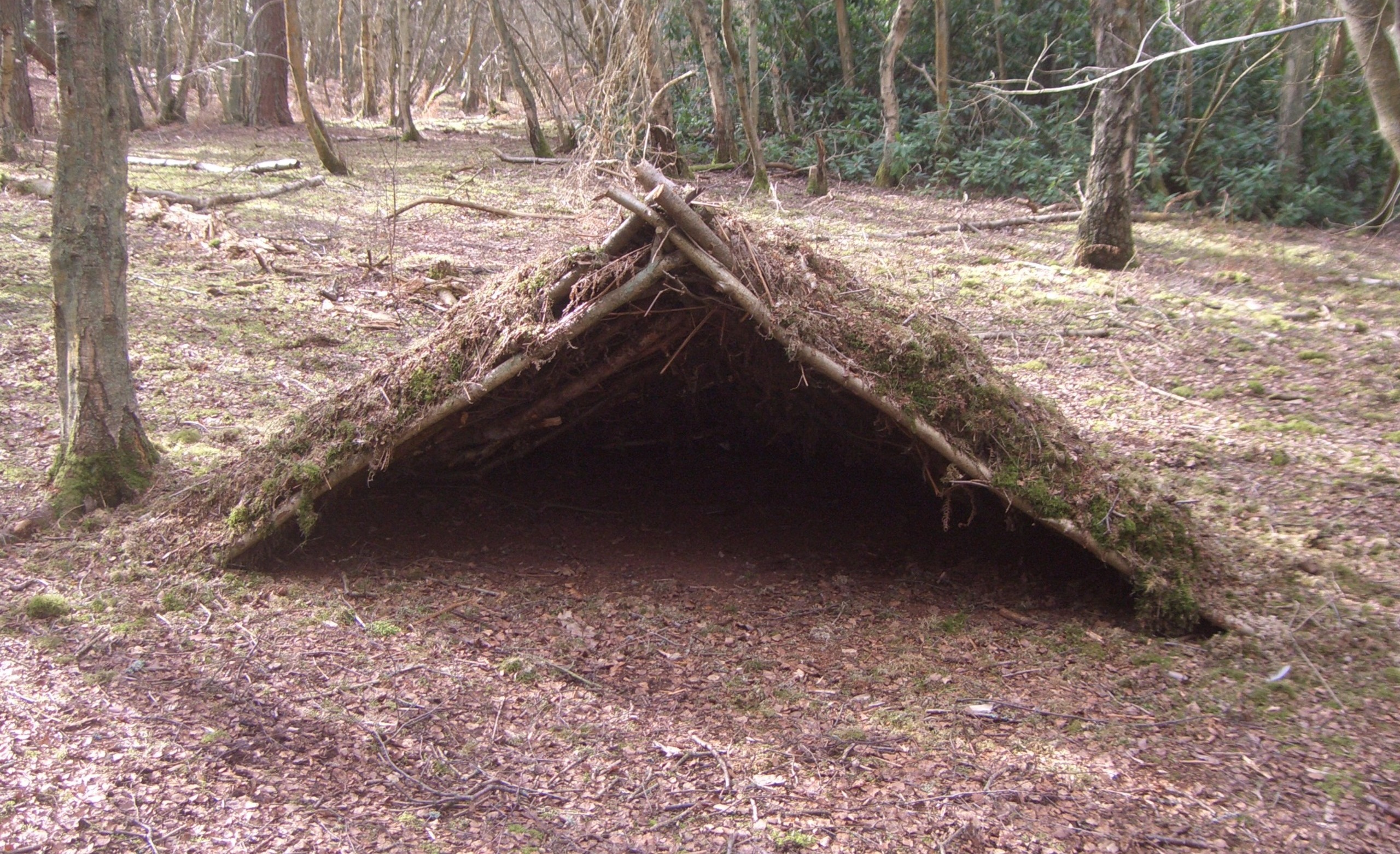
How To Build A Survival Shelter
When venturing into the great outdoors, knowing how to build a survival shelter could mean the difference between comfort and calamity. In the wild, nature can be both a breathtaking wonder and an unpredictable force to reckon with.
Whether you’re on a hiking expedition gone awry or facing unexpected circumstances in the wilderness, having the skills to create your own shelter is crucial. Let’s dive into the essential guide on how to build a survival shelter that could save your life in challenging situations!
The Importance of a Survival Shelter
Picture this: you’re lost in the wilderness as night falls, temperatures dropping rapidly. A survival shelter isn’t just a convenience; it’s your lifeline against the harsh elements. It provides protection from wind, rain, snow, and extreme temperatures that could otherwise lead to hypothermia or other life-threatening conditions.
Beyond physical safety, a well-built shelter offers psychological comfort too. In a stressful survival situation, having a secure and warm refuge can boost morale and help maintain a clear head for decision-making. By understanding the importance of a survival shelter and mastering the skills to build one, you enhance your chances of surviving unforeseen challenges in the great outdoors.
Understanding the Elements and Your Surroundings
Understanding the elements and your surroundings is crucial when it comes to building a survival shelter. The first step is to assess the environment you are in – consider factors like weather patterns, terrain, and potential hazards. Take note of where the sun rises and sets, as this can help determine the best placement for your shelter.
Next, familiarize yourself with local flora and fauna that could impact your shelter construction. Be mindful of any wildlife or insects that may pose a threat or be attracted to certain materials used in building shelters.
Additionally, understanding how wind direction and water sources can affect your shelter’s stability and accessibility is key. Choose a location that offers protection from harsh winds while also being close enough to a water source for convenience.
By observing these elements and adapting to your surroundings, you can increase your chances of successfully constructing a functional survival shelter tailored to the specific conditions you are facing.
Types of Survival Shelters:
When it comes to building a survival shelter, there are various types to consider based on your surroundings and resources available. Natural shelters utilize caves, overhanging rock formations, or dense tree canopies for protection. These can provide quick refuge in emergencies but may not be suitable for all environments.
Tarp/Shelter Building Shelters involve using materials like tarps, ponchos, or emergency blankets to create makeshift shelters. They offer versatility and protection from the elements if properly set up.
Debris Huts are constructed by layering branches, leaves, and other natural debris against a frame to form an insulated shelter. This type of shelter is effective in cold climates where insulation is crucial for retaining body heat.
Each type of survival shelter has its advantages depending on the situation you find yourself in during a crisis. Understanding how to construct these shelters could be the difference between surviving comfortably or enduring harsh conditions while waiting for rescue.
A. Natural Shelters
When in a survival situation, natural shelters can be a lifesaver. These shelters are formed by utilizing existing features in the environment to provide protection from the elements. Look for caves, overhanging cliffs, or dense foliage that can serve as ready-made shelter options.
Natural shelters offer immediate cover and insulation against harsh weather conditions without requiring extensive construction. They blend seamlessly with the surroundings, making them ideal for camouflage and avoiding detection.
However, it’s essential to assess these natural shelters carefully for safety and stability before deciding to use them. Ensure there are no potential hazards like falling rocks or animal dens inside the shelter. Be prepared to reinforce or modify the shelter if needed for added protection.
Remember, adaptability is key when utilizing natural shelters in different environments. Stay resourceful and creative in making the most out of nature’s offerings for your survival needs.
B. Tarp/Shelter Building Shelters
When it comes to building a survival shelter, using tarps can be a versatile and efficient option. Tarps are lightweight, easy to carry in your emergency kit, and can provide quick protection from the elements.
To create a tarp shelter, start by finding two sturdy anchor points like trees or poles. Lay the tarp flat on the ground and secure one end to each anchor point. Adjust the height and angle of the tarp based on weather conditions – lower for wind protection or higher for ventilation.
For added stability, use rocks or logs around the edges of the tarp to prevent flapping in strong winds. You can also dig trenches around the perimeter to channel away rainwater.
Experiment with different configurations such as lean-tos, A-frames, or even teepees depending on your needs and available materials. With some practice and creativity, you can quickly set up a reliable shelter using just a tarp in various outdoor situations.
C. Debris Huts
When it comes to survival shelters, debris huts are a valuable option in the wilderness. These shelters can be constructed using natural materials like branches, leaves, and other debris found in the environment. By utilizing what nature provides, you can create a sturdy and protective shelter against the elements.
To build a debris hut, start by creating a frame with larger branches or sticks leaning against a solid support like a tree or rock. Then layer smaller branches and foliage over this frame to form walls that will insulate you from wind and rain. The more layers you add, the better insulated your shelter will be.
Remember to leave enough space inside for yourself while still ensuring there are no gaps where cold air could seep through. Adding an additional layer of leaves or pine needles on top can provide extra insulation and waterproofing for your shelter.
Debris huts are versatile and adaptable shelters that can be modified based on your surroundings. By mastering the art of building these shelters, you increase your chances of survival in challenging outdoor situations.
Essential Tools and Materials Needed
When it comes to building a survival shelter, having the right tools and materials is crucial for your safety and comfort. Here are some essential items you’ll need:
First off, a good quality tarp or poncho can serve as the foundation of your shelter. It provides protection from rain and wind, keeping you dry in harsh weather conditions.
Next, sturdy rope or paracord will be invaluable for securing your shelter structure. It’s essential for tying down tarps and creating a stable framework.
A reliable multi-tool or knife is indispensable for cutting branches, cordage, or shaping materials for construction. It’s versatile and can help you with various tasks during shelter building.
Additionally, gathering natural materials like leaves, branches, and debris will be necessary to insulate your shelter from the cold ground and provide extra protection against elements.
Having these basic tools and materials on hand will greatly increase your chances of successfully constructing a functional survival shelter in any situation.
Step-by-Step Guide to Building a Survival Shelter
When it comes to building a survival shelter, following a step-by-step guide can be the key to staying safe in challenging situations.
First, assess your surroundings and choose a suitable location for your shelter. Look for flat ground away from potential hazards like falling branches or flooding areas.
Gather materials such as branches, leaves, and any available tarp or plastic sheeting. These will serve as the foundation and cover of your shelter.
Start by creating a sturdy frame using long branches or logs leaned against a solid support like a tree trunk. This will form the structure of your shelter.
Layer smaller branches and foliage over the frame to create insulation and protection from the elements. Make sure to pack them tightly for added durability.
Cover the shelter with additional layers of leaves or tarp to waterproof it and provide extra warmth. Remember that practice makes perfect when it comes to building shelters in different environments!
Additional Tips for Shelter Building in Different Environments
When it comes to building a survival shelter in different environments, adaptability is key. In snowy areas, consider using evergreen branches to create insulation and block wind. In hot climates, prioritize shade and ventilation to prevent overheating.
In coastal regions, be mindful of tides and potential flooding; build your shelter above the high tide line. In rocky terrain, look for natural crevices or rock formations that can provide added protection from the elements.
Remember to always assess your surroundings before constructing a shelter – take note of any wildlife presence or potential hazards like falling rocks.
Utilize materials native to the environment you are in for better camouflage and structural integrity. Stay flexible with your design based on the specific conditions you encounter. Adaptation is key when it comes to surviving in diverse landscapes.
Importance of Practice and Preparedness
Practice and preparedness are key elements in mastering the art of building a survival shelter. Like any skill, shelter-building requires hands-on experience to become proficient. By practicing different techniques in various environments, you can adapt quickly when faced with an emergency situation.
Preparedness goes beyond having the necessary tools and materials; it involves mental readiness as well. Being mentally prepared means staying calm under pressure, making quick decisions, and being resourceful with what’s available in your surroundings.
Regular practice not only hones your skills but also boosts your confidence in your ability to create a shelter when needed most. It allows you to troubleshoot potential challenges before they arise and fine-tune your techniques for efficiency.
Remember, practice doesn’t make perfect – it makes permanent. The more you practice building survival shelters, the more instinctual it becomes. Stay proactive by regularly honing this essential skill to ensure you’re always ready for whatever nature throws at you.
Conclusion
In the unpredictable wilderness, knowing how to build a survival shelter can be a lifesaving skill. By understanding the importance of shelter, being aware of your surroundings and the elements at play, and having essential tools and materials on hand, you can increase your chances of surviving in challenging situations.
Whether it’s utilizing natural shelters like caves or overhangs, constructing tarp shelters with branches and leaves, or building debris huts for insulation from the cold, there are various options available depending on your environment.
Remember to practice building different types of shelters in various conditions to hone your skills. Being prepared with knowledge and resources can make all the difference when faced with an emergency situation where shelter is crucial for survival.
So next time you head into the great outdoors, equip yourself with the knowledge and skills needed to build a survival shelter – it could be what stands between you and safety in times of need. Stay safe out there!



